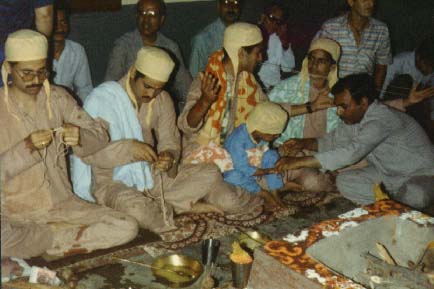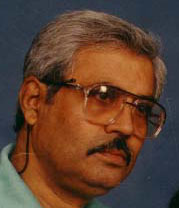test Menu 1
test Menu 1
test Menu 2
test Menu 2
test Menu 3
test Menu 3
test Menu 4
test Menu 4
test Menu 5
test Menu 5
test Menu 7
test Menu 7
test Menu 8
test Menu 8
Test menu 9
Test menu 9
Test menu 10
Test menu 10
KOA HOME
KOA HOME
Culture & Heritage Home
Culture & Heritage Home
Organization
Organization
Programs
Programs
Pay Membership Dues
Pay Membership Dues
Donate Online
Donate Online
History
History
Geography
Geography
Ethnic Groups
Ethnic Groups
Tourism
Tourism
Kashmiri Music
Kashmiri Music
Language
Language
Cuisine
Cuisine
Satisar Foundation
Satisar Foundation
Virtual Homeland
Virtual Homeland
IILS
IILS
NSKRI
NSKRI
Project Zaan
Project Zaan
Vyeth Television
Vyeth Television
Writers & Columnists
Writers & Columnists
Book Reviews
Book Reviews
Memoirs
Memoirs
Tributes
Tributes
CULTURE Page
CULTURE Page
Region
Region

Organizations
Organizations

Artistes
Artistes
Playwrights
Playwrights
Poets
Poets
Paintings
Paintings
Personalities
Personalities
Leaders
Leaders
Names
Names
Proverbs
Proverbs
Writeups
Writeups

Short Stories
Short Stories
Folktales
Folktales
Crown of India
Crown of India
Glimpses of Culture
Glimpses of Culture
RELIGION Page
RELIGION Page
Rituals & Ceremonies
Rituals & Ceremonies
Places of Worship
Places of Worship
Hindu Deities
Hindu Deities
Saints & Sages
Saints & Sages
Devotional Songs
Devotional Songs
Hindu Scriptures
Hindu Scriptures
Nilmata Purana
Nilmata Purana
Panchastavi
Panchastavi
Shaivism
Shaivism
Kundalini
Kundalini
IAKF
IAKF
Panun Kashmir
Panun Kashmir
HISTORY Page
HISTORY Page
POLITICS Page
POLITICS Page
Organizations
Organizations

Appeal
Appeal
Islamic Fundamentalism
Islamic Fundamentalism
Atrocities in Kashmir
Atrocities in Kashmir
Pakistan's Role
Pakistan's Role
Afghanistan Factor
Afghanistan Factor
Historical Documents
Historical Documents
Kargil Heroes
Kargil Heroes
Video Clips
Video Clips
Slide Presentations
Slide Presentations
Articles/Opinions
Articles/Opinions
PERIODICALS Page
PERIODICALS Page
PUBLICATIONS Page
PUBLICATIONS Page
Downloads
Downloads
Kashmir Sentinel
Kashmir Sentinel
Koshur Samachar
Koshur Samachar
Unmesh
Unmesh
Vitasta
Vitasta
Har-Van
Har-Van
Patrika
Patrika
Milchar
Milchar
Voice of J&K
Voice of J&K
Neel Nag
Neel Nag
Panchtarni
Panchtarni
Paannyaar
Paannyaar
Vaakh
Vaakh
Image Gallery
Image Gallery
Social Media
Social Media
Matrimonials
Matrimonials
Copyrights Policy
Copyrights Policy
Disclaimer
Disclaimer
Privacy Statement
Privacy Statement
Credits
Credits
Contact Us
Contact Us





 The
upanayana ceremony was conducted for both sexes in ancient India.
Naturally there are similar ceremonies in other countries and cultures. The word
for Christians is CONFIRMATION. This is one of the 'sacraments'. The sacrament
is a deformed version of SAMASKARA. The jews tie a thread of several strands,
others tie on their waist, etc. I saw a video of an upanayana ceremony conducted
in Andhra by Swamini Sharadapriyananda for her students. She is trying to revive
the ceremony for girls. Indeed all her female disciples get the holy thread.
Gayetri mantra is found in Soorya Upanishad. Swamini Sharada loves teaching tht
text. It is indeed very powerful. It is intersting to note that She has
deidcated her life to serving the villagers of a remote area in Andhra where, in
addition to her vedanta mission, she teaches villagers how to farm and how to
interact with the beaurocrats of the state Govt. She used to be a lawyer in
Hyderabad. In any case I believe we will be seeing more and more cultured hindus
allow their female children to be initiated as well. It is a matter of balancing
'what is right' with 'family/society pressures'.
The
upanayana ceremony was conducted for both sexes in ancient India.
Naturally there are similar ceremonies in other countries and cultures. The word
for Christians is CONFIRMATION. This is one of the 'sacraments'. The sacrament
is a deformed version of SAMASKARA. The jews tie a thread of several strands,
others tie on their waist, etc. I saw a video of an upanayana ceremony conducted
in Andhra by Swamini Sharadapriyananda for her students. She is trying to revive
the ceremony for girls. Indeed all her female disciples get the holy thread.
Gayetri mantra is found in Soorya Upanishad. Swamini Sharada loves teaching tht
text. It is indeed very powerful. It is intersting to note that She has
deidcated her life to serving the villagers of a remote area in Andhra where, in
addition to her vedanta mission, she teaches villagers how to farm and how to
interact with the beaurocrats of the state Govt. She used to be a lawyer in
Hyderabad. In any case I believe we will be seeing more and more cultured hindus
allow their female children to be initiated as well. It is a matter of balancing
'what is right' with 'family/society pressures'.
 Yagnopavit
is symbolic of the initiation of a householder into performing his threefold
duties to the household, to his devas, and to his pitras - hence the three
strands with brahmagandh or divine knot and three ways of wearing it (over the
right shoulder, over the left shoulder, and round the neck only) as a necessary
ritual tool when performing these three duties. On his marriage a householder
gets three more strands on behalf of his wife. Its use and significance is
limited to ritualistic practices only that is why a sanyasi does not wear it and
under very special circumstances the un-initiated is temporarily invested with
it to perform certain rites only. Since males are usually called upon to perform
rites or ritualistic practices as active participants, they alone are invested
with the sacred thread. This does not, however, mean that women are barred from
active participation in religious or ritualistic practices, they are only
exempted for so many important reasons. Wearing or otherwise of yagnopavit has
nothing to do with the incantation of Gayatri Mantra or for that matter with any
other spiritual practice. Had it been so we wouldn't have such spiritual
luminaries as Gargi, Maitri, Savitri, Lala-ded, Ropa-bhawani, or a later-day
sadhvi like Mathra-devi.
Yagnopavit
is symbolic of the initiation of a householder into performing his threefold
duties to the household, to his devas, and to his pitras - hence the three
strands with brahmagandh or divine knot and three ways of wearing it (over the
right shoulder, over the left shoulder, and round the neck only) as a necessary
ritual tool when performing these three duties. On his marriage a householder
gets three more strands on behalf of his wife. Its use and significance is
limited to ritualistic practices only that is why a sanyasi does not wear it and
under very special circumstances the un-initiated is temporarily invested with
it to perform certain rites only. Since males are usually called upon to perform
rites or ritualistic practices as active participants, they alone are invested
with the sacred thread. This does not, however, mean that women are barred from
active participation in religious or ritualistic practices, they are only
exempted for so many important reasons. Wearing or otherwise of yagnopavit has
nothing to do with the incantation of Gayatri Mantra or for that matter with any
other spiritual practice. Had it been so we wouldn't have such spiritual
luminaries as Gargi, Maitri, Savitri, Lala-ded, Ropa-bhawani, or a later-day
sadhvi like Mathra-devi.
 My
dear ************** has suggested that I write a brief note on Yajnopavit,
and the reason why we call it Mekhal in Kashmiri. In my younger days I
posed this question to my family priest late Vasanand Zadoo, a saint scholar in
his own right. Before I explain what his reply was let me first say that there
are sixteen (Sanskaras) rituals to be performed from the pre-natal to the post
death period. Their method, mantras and other details have been prescribed by
Rishi Katyayana for the entire Hindu Community. In Kashmir, however, we follow
these with some modifications as prescribed by Rishi Logaksha for us. The
rituals begin with ‘Punaswan’ (please recall the ritual of Sondar
after the birth of a child, when ladies utter the phrase, Shokh ta
ponasun.) These culminate with Shraddha ceremony, and include kahanethar,
yajnopavit, Vivah etc.
My
dear ************** has suggested that I write a brief note on Yajnopavit,
and the reason why we call it Mekhal in Kashmiri. In my younger days I
posed this question to my family priest late Vasanand Zadoo, a saint scholar in
his own right. Before I explain what his reply was let me first say that there
are sixteen (Sanskaras) rituals to be performed from the pre-natal to the post
death period. Their method, mantras and other details have been prescribed by
Rishi Katyayana for the entire Hindu Community. In Kashmir, however, we follow
these with some modifications as prescribed by Rishi Logaksha for us. The
rituals begin with ‘Punaswan’ (please recall the ritual of Sondar
after the birth of a child, when ladies utter the phrase, Shokh ta
ponasun.) These culminate with Shraddha ceremony, and include kahanethar,
yajnopavit, Vivah etc.





No one has commented yet. Be the first!